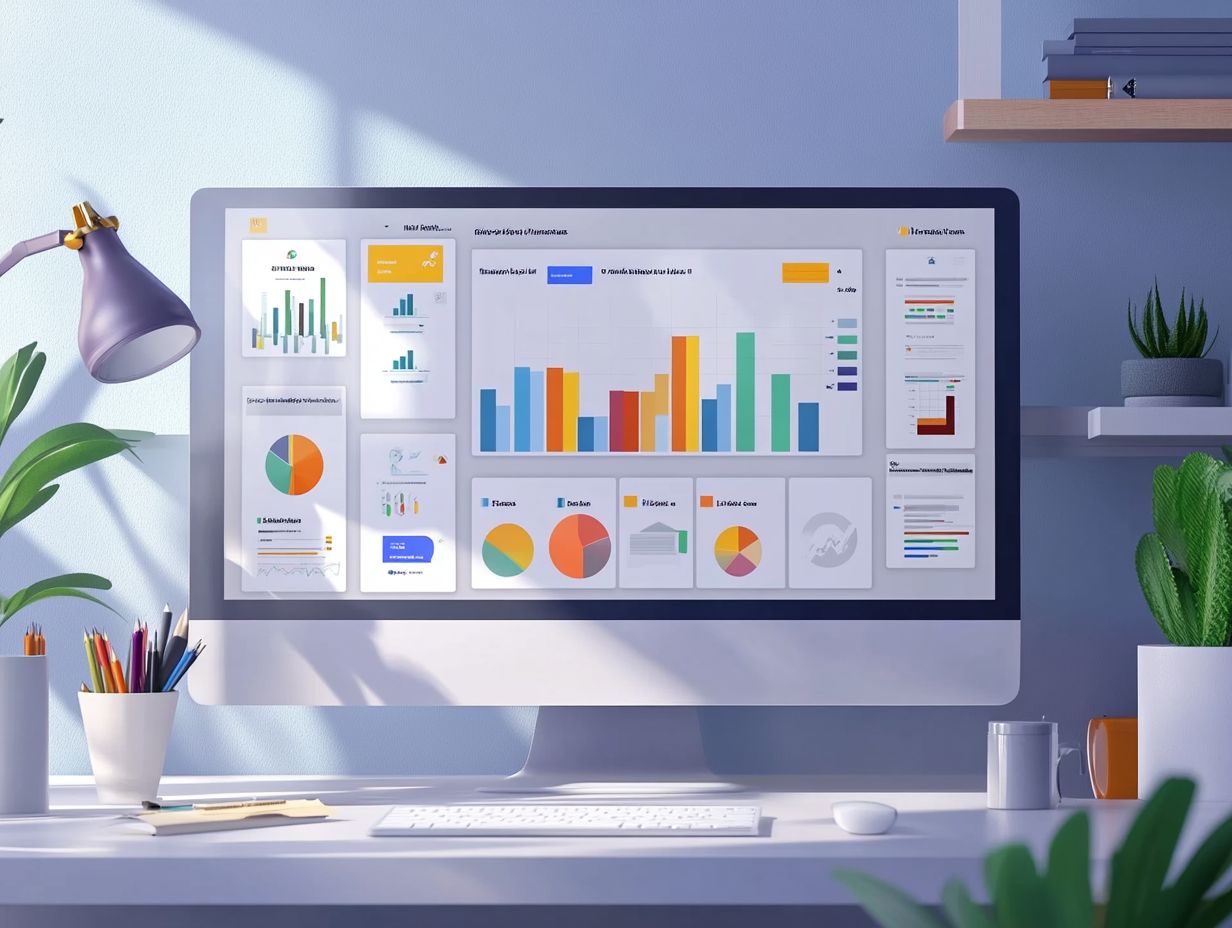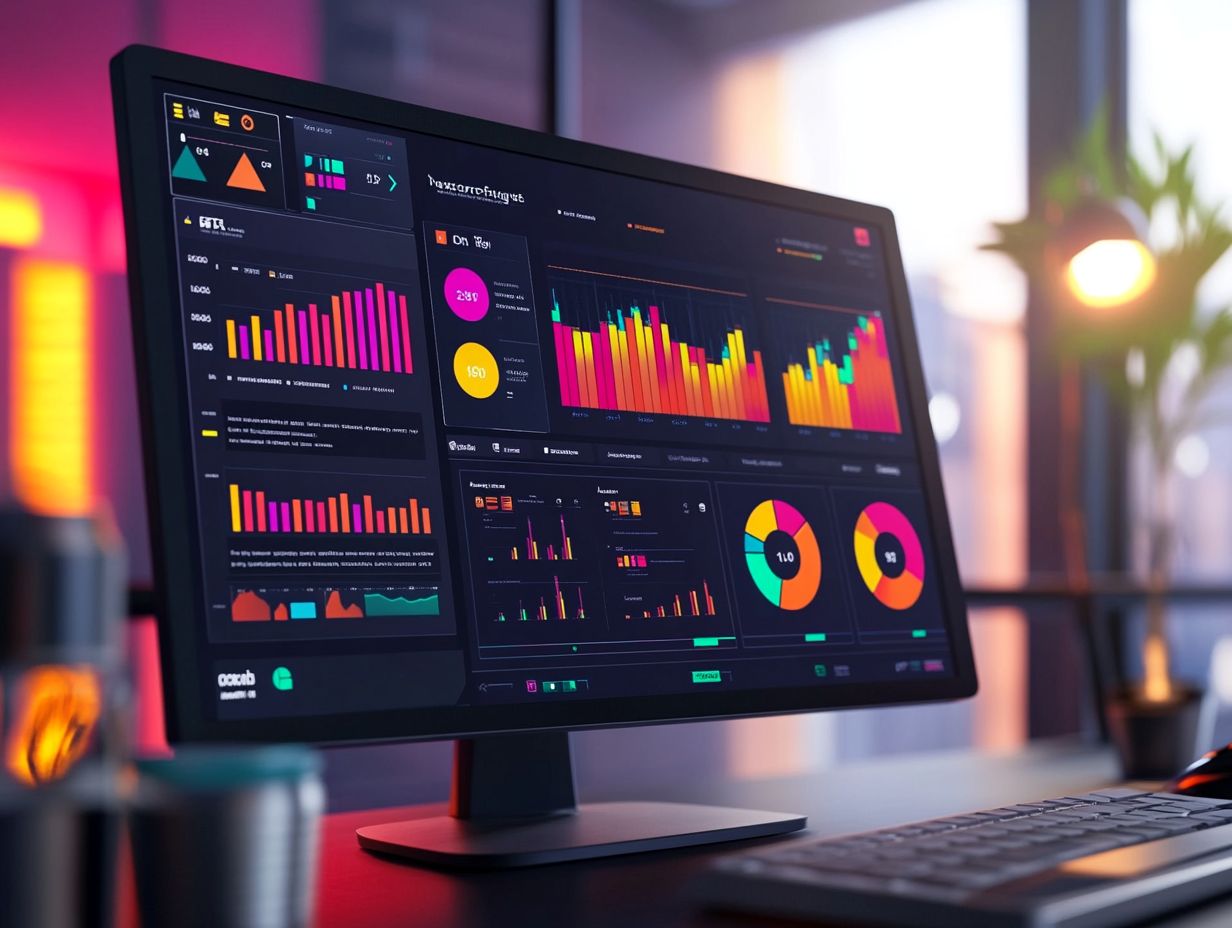Email Marketing Metrics You Should Track
Let's Set Up Your Lead Generation Strategy
Fill out the form below, and our team will get in touch with you to create a tailored solution for your business.
In the dynamic realm of digital marketing, grasping the effectiveness of your email campaigns is essential.
Monitoring key metrics illuminates how well your messages resonate with your audience and highlights areas that may need refinement, such as spam complaints.
This article delves into vital email marketing metrics like open rates, click-through rates, and conversion rates. It also presents tools designed to simplify your tracking process.
Discover how to harness these insights to enhance your email marketing strategy and drive superior results, maximizing your revenue per email.
Contents
- Key Takeaways:
- Why Tracking Metrics is Important
- Key Email Marketing Metrics to Track
- Let's Set Up Your Lead Generation Strategy
- Let's Set Up Your Lead Generation Strategy
- Tools for Tracking Email Marketing Metrics
- Let's Set Up Your Lead Generation Strategy
- How to Use Metrics to Improve Email Marketing Strategy and Tracking Success
- Frequently Asked Questions About Email Metrics
- Let's Set Up Your Lead Generation Strategy
Key Takeaways:

- Tracking email marketing metrics is crucial for understanding the effectiveness of your campaigns and making informed decisions for improvement.
- Key metrics to track include open rate, click-through rate, conversion rate, unsubscribe rate, bounce rate, and list growth rate.
- Utilize tools such as email service providers and Google Analytics to track and analyze your metrics. Use the insights to optimize your email marketing strategy.
Why Tracking Metrics is Important
In the realm of email marketing, tracking metrics is essential for evaluating the effectiveness of your campaigns and driving strategic enhancements.
Metrics like open rate, click-through rate, and conversion rate provide valuable insights into user engagement. This helps you make informed decisions that boost your overall return on investment (ROI).
Consistent monitoring helps refine your strategies to align with consumer purchasing decisions, ensuring your relevance in a competitive landscape. This data-driven approach will maximize your campaign effectiveness!
Additionally, it cultivates a deeper understanding of customer behavior, which is vital for sustained growth.
Key Email Marketing Metrics to Track
To truly elevate your email marketing strategy, you must meticulously track a range of key metrics that provide valuable insights into your campaign’s performance.
Open rates and click-through rates show how engaged your subscribers are, while the conversion rate reveals how effectively you re driving sales.
By monitoring the bounce rate and unsubscribe rate, you can pinpoint potential issues within your subscriber list. Keeping an eye on the list growth rate is crucial for ensuring long-term success.
Each of these email metrics serves a critical role in shaping your future campaigns and refining your overall marketing strategy to improve your revenue per subscriber.
Open Rate
The open rate is a crucial metric in email marketing, reflecting the percentage of recipients who actually opened your emails. This number doesn t just showcase the effectiveness of your subject lines; it offers valuable insights into audience engagement over time.
A higher mobile open rate indicates that consumers are increasingly checking their emails on their devices, underscoring the importance of delivering mobile-optimized content.
Let's Set Up Your Lead Generation Strategy
Fill out the form below, and our team will get in touch with you to create a tailored solution for your business.
Several factors play a significant role in influencing open rates, such as the timing of your email delivery and effective list segmentation. For example, sending emails during peak hours when recipients are most likely to check their inbox can significantly boost your open rates.
Segmenting your email list based on user preferences ensures that your content resonates with your audience. To enhance open rates, focus on crafting compelling subject lines that spark curiosity or create a sense of urgency, while continuously analyzing your performance metrics.
By understanding how open rates correlate with click-through rates and conversions, you can gain deeper insights into the overall success of your email marketing campaigns.
Start tracking your metrics today for better email performance!
Click-Through Rate (CTR)
Click-through rate (CTR) is a crucial metric in your email marketing toolkit. It measures the percentage of recipients who clicked on one or more links in your emails. This metric helps assess success, as it often correlates with your conversion rate and reflects the appeal of your content and call-to-action.
Enhancing your CTR boosts overall campaign performance and revenue generated per email.
To calculate your CTR, divide the number of clicks by the total number of emails delivered and multiply by 100 to express it as a percentage. This figure reveals engagement levels and highlights areas for improvement. Testing two versions of an email can help identify what resonates with your audience.
Employ segmentation strategies based on customer behavior. This means grouping your audience to craft tailored content that speaks directly to their interests, ultimately driving higher engagement and conversions.
Conversion Rate

The conversion rate is vital in your email marketing strategy. It represents the percentage of recipients who take a desired action, such as making a purchase or signing up for a service. This metric is essential for gauging the effectiveness of your email campaigns in driving revenue and achieving your goals. High conversion rates indicate that your content resonates with your audience and meets their needs.
To track conversion actions effectively, monitor purchases, downloads, and sign-ups. Adjust your strategies as needed. Analyzing which actions yield the highest engagement provides valuable insights.
Implementing personalized content can significantly boost these rates. Tailored offers and recommendations engage your recipients personally.
Incorporate A/B testing for different subject lines, layouts, and calls to action into your optimization process. This allows you to refine your approach continuously. Focus on these tactics to create a compelling user journey that encourages action and drives results.
Unsubscribe Rate
The unsubscribe rate is a critical metric in your email marketing toolkit. It reveals the percentage of recipients who choose to opt out of future communications. A high unsubscribe rate may indicate deeper issues, such as the relevance of your content or the frequency of your emails.
Understanding the reasons behind unsubscribes is essential to maintain engagement over time. This knowledge allows you to refine your email strategies and improve overall subscriber satisfaction.
Let's Set Up Your Lead Generation Strategy
Fill out the form below, and our team will get in touch with you to create a tailored solution for your business.
When recipients disengage, the effectiveness of your campaign may suffer. A shrinking list often leads to lower open and click-through rates, jeopardizing your campaign’s reach and potentially harming your reputation with email service providers.
To tackle these challenges, focus on segmenting your subscriber lists, personalizing your content, and experimenting with different email frequencies. Engaging surveys and dynamic content can significantly enhance the user experience. Delivering consistent value minimizes the chance of unsubscribes and cultivates a more loyal audience.
Bounce Rate
Bounce rate is an essential email marketing metric. It measures the percentage of emails that fail to reach recipients, which can affect your deliverability and engagement over time.
A high bounce rate can ultimately diminish your overall ROI. Hard bounces happen when an email can’t be delivered due to an invalid address, signifying that the recipient’s email no longer exists. In contrast, soft bounces are temporary problems, such as a full inbox or server hiccups.
Now is the time to clean up your subscriber list to ensure successful campaigns! Regularly eliminating inactive or invalid email addresses is crucial. Utilizing email verification tools can enhance deliverability by confirming addresses before launching your campaigns.
Monitoring bounce rates over time is straightforward with analytics dashboards. This enables you to spot trends and take proactive steps to elevate your overall email performance, informing your campaign goals.
Tools for Tracking Email Marketing Metrics
Utilizing the right tools for tracking email marketing metrics is crucial for achieving your campaign’s success. Email service providers such as HubSpot and AdRoll offer sophisticated metrics dashboards that enable you to analyze key performance indicators, including open rates and conversion rates.
Integrating tools like Google Analytics gives you deeper insights into user behavior following email engagement. This provides a comprehensive understanding of your campaign’s effectiveness and enhances your metrics dashboard.
Email Service Providers
Email service providers (ESPs) like HubSpot and AdRoll are essential allies in your quest for effective email marketing campaigns. They offer comprehensive metrics dashboards that illuminate your path and track email metrics.
These platforms are packed with exciting features that boost your marketing game. Tools such as A/B testing, audience segmentation, and automated reporting enable you to tailor your messages with precision.
The right provider can profoundly influence your campaigns’ success. It’s critical to select one that aligns perfectly with your unique goals and needs.
With the ability to visualize trends and analyze data from multiple perspectives, you’ll be equipped to make informed decisions that drive conversion rates and boost customer engagement.
Google Analytics

Google Analytics is a powerful ally for your email marketing endeavors. It allows you to track user behavior and engagement long after that first email interaction.
By establishing specific goals and tracking parameters, you can uncover invaluable insights into how your email campaigns drive website traffic and conversions. Start by integrating UTM parameters into your email links to create a clear pathway for tracking effectiveness.
Let's Set Up Your Lead Generation Strategy
Fill out the form below, and our team will get in touch with you to create a tailored solution for your business.
Once the data starts flowing into Google Analytics, concentrate on key metrics like open rates, click-through rates, and conversion rates. Analyzing these figures not only reveals which strategies are effective but also helps you refine your future messaging and overall campaign design.
How to Use Metrics to Improve Email Marketing Strategy and Tracking Success
Leveraging metrics is crucial for elevating your email marketing strategy. It offers the insights needed to optimize your campaigns effectively. Analyze key metrics, such as open and click-through rates, to improve your campaigns.
This continuous evaluation enhances engagement, propelling higher conversion rates and maximizing your overall ROI.
Identifying Areas for Improvement in Email Campaigns
Identifying areas for improvement in your email marketing is essential for enhancing campaign effectiveness and maximizing engagement over time. By closely monitoring metrics such as click-through rates and conversion rates, you can pinpoint specific aspects of your campaigns that may need adjustment.
To dive deeper into performance analysis, it’s vital to segment your campaigns by audience demographics and behaviors. This allows for a more nuanced view of potential weaknesses. Incorporating feedback loops, such as surveys and A/B testing, provides valuable insights that can drive continuous improvement.
By actively seeking feedback and making iterative changes based on performance data, you can refine your strategies. This ensures that future efforts are not only more targeted but also better aligned with your audience’s preferences.
This cyclical process of reviewing and optimizing can significantly elevate the overall impact of your email marketing initiatives.
Optimizing Email Campaigns: Best Practices
Optimizing your email campaigns is not just a one-time task; it s a continuous journey fueled by data-driven insights that elevate performance and engagement over time. By conducting systematic A/B tests, you can identify the most effective elements of your campaigns, from subject lines to content and even the placement of your call-to-action buttons.
These tests enable you to refine your messaging. For example, you might discover that a personalized subject line significantly boosts your open rates. A simple change in a button’s color could lead to a surge in click-through rates.
Such insights deliver immediate results and contribute to long-term strategies that foster greater brand loyalty. Ultimately, embracing continuous optimization through A/B testing sets the stage for enhanced engagement and conversion rates. This ensures your marketing efforts resonate more deeply with your target audience and support growth in your list growth rate!
Frequently Asked Questions About Email Metrics
What are the key email marketing metrics to track?

The key email marketing metrics to track include open rate, click-through rate, conversion rate, bounce rate, unsubscribe rate, and list growth rate.
What is open rate, and why is it important?
Open rate is the percentage of recipients who open your email. Tracking it shows how effective your subject line and email content are.
How is click-through rate calculated, and why is it valuable?
Click-through rate is calculated by dividing the number of clicks on a link in your email by the total number of emails delivered. It is valuable because it indicates the level of engagement and interest in your email content.
Why should I track my conversion rate?
Conversion rate is the percentage of recipients who complete a desired action after opening your email, such as making a purchase or filling out a form. Tracking this metric helps measure the success of your email campaigns in achieving your goals.
Let's Set Up Your Lead Generation Strategy
Fill out the form below, and our team will get in touch with you to create a tailored solution for your business.
What does bounce rate indicate, and how can I lower it?
Bounce rate is the percentage of emails that were not successfully delivered to recipients. A high bounce rate may indicate issues with your email list quality or deliverability. To lower it, regularly clean your email list and follow best practices for email deliverability.
How can I improve my email marketing metrics overall?
To improve your email marketing metrics, focus on creating targeted and engaging content. Regularly clean and segment your email list, and continuously test and analyze your campaigns to optimize for better results.






